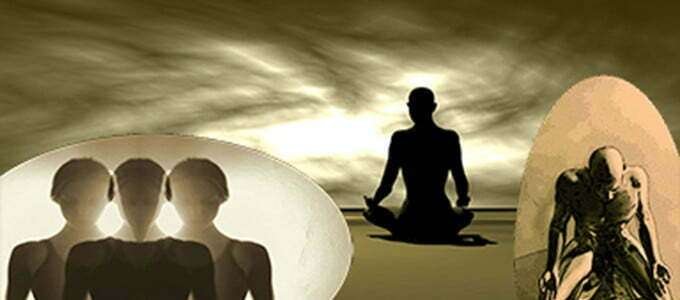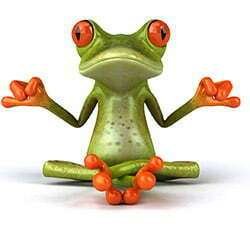How little personality really wants to know
“….don’t worry if, at the end of any day, you suddenly realize that you can’t remember a word I’ve said. That doesn’t matter. It’s the journey itself that’s going to change you.” Ishmael – by Daniel Quinn (A gorilla comments on the current state of affairs)
It seems obvious – our attention is skewed by our enneagram fixation AND it functions in a manner to reinforce and perpetuate the fixation. When we are blind to so much, how can we ever hope to see? Our personality, ego structure, and false self always function with an agenda.
This agenda, whether positive or negative, and the underlying motivation for it is habitual, unconscious, and insidious. But, we are addicted and though we protest otherwise – refuse to let go of the pain and suffering and story associated with it. The pain, the suffering and the story are inseparable from it – they are part and parcel of one manifest phenomenon– who we take ourselves to be.
….”I know of no such story,” I told him at last.
“You mean you’ve never heard of it?”
“That’s right.”
…”That’s because there’s no need to hear of it. …Every one of you knows it by heart by the time you are six or seven. …And you hear it incessantly, because every medium of propaganda, every medium of education pours it out incessantly. And hearing it incessantly, you don’t listen to it. There’s no need to listen to it. It’s always there humming away in the background, so there’s no need to attend to it at all. In fact, you’ll find – at least initially – that it’s hard to attend to it.” Ishmael
The desire to actualize our potential; the longing for freedom and peace; the hunger for love and contentment arise from within the soul as an optimizing force which is quickly co-opted by the ego – incorporated into its agenda and activity for self-improvement. Improving the self is self-defeating – a point of appreciation I owe to Claudio Naranjo’s presentation of the enneagram.
 Our understanding of self is a Gordian knot – the more we struggle with it, the tighter it gets. So, how does one unravel this knot? How can we help to align our exploration with the optimizing force and relax ego-activity? How can we avail ourselves of the wisdom of the enneagram without perpetuating the fixation?
Our understanding of self is a Gordian knot – the more we struggle with it, the tighter it gets. So, how does one unravel this knot? How can we help to align our exploration with the optimizing force and relax ego-activity? How can we avail ourselves of the wisdom of the enneagram without perpetuating the fixation?
We need to get below the surface of the self – surface that includes all of those great characteristics and traits so wonderfully articulated in the enneagram of personality types. We need a crack or two in the shell of the self – for we have been existing for a long, long time as a bounded entity. When a bounded entity turns inward – that movement of attention is, at first, also a movement away from the true self – another conundrum on the path of self-improvement.
What we need is to NOT do. Allowing our self to see the truth – our situation as it actually is – invites the optimizing force into our experience. Developing the capacity to be in full contact with our experience while not acting out the ego’s agenda – our story – is being in the service of the soul. (Appreciation for the work of A. H. Almaas)
Our intent is not to do but to be. Our motivation is not self-improvement but freedom and authenticity. Our desire is not to define and explain our self, but to clarify the transparency of the soul. And – believe it or not – knowing your fixation can help – but, as usual, one must take the road less traveled.
Wanting
To be, to become, to know
Is torture
Sitting in the Night
Being revealed
Is the sweetest
Satisfaction
jh
The Obvious
The enneagram is a treasure-trove of insight and information for a self-improvement campaign. I mean, my God, we have your strengths and weaknesses, our high side and low side, our movements toward integration and disintegration. We have our existential issues, our chief feature, our passion, our delusion, our…well, you get the point – no need to write another book.
 But how do we work with that information in a real way? Go where we don’t want to go – meaning let our attention go there – feel it fully and immediately. When the mind tells us – that makes no sense, when anxiety rises, when we notice places we avoid – we need to get a clue! The personality (ego), according to Freud, is basically a defense – the whole enchilada. It’s a collection of semi-successful ways in which we have learned to cope with life, to survive, to manage our affairs while increasing our pleasure and avoiding pain.
But how do we work with that information in a real way? Go where we don’t want to go – meaning let our attention go there – feel it fully and immediately. When the mind tells us – that makes no sense, when anxiety rises, when we notice places we avoid – we need to get a clue! The personality (ego), according to Freud, is basically a defense – the whole enchilada. It’s a collection of semi-successful ways in which we have learned to cope with life, to survive, to manage our affairs while increasing our pleasure and avoiding pain.
Take one of your type’s favorite or dominant characteristics or traits and explore its opposite. Love strength? Give some attention to helplessness. Prefer being in control? Explore powerlessness.
Here’s a way to explore this:
Get a pen and paper. For 30 minutes answer this question with whatever comes to mind.
“What’s right about not being ___________?”
(Fill in this blank with something you avoid, something your personality has learned to compensate for – weak, needy, wrong, stupid, and etc.)
Right now, some personalities have already rejected this exercise or are in the process of modifying it – say ten minutes instead of thirty. Well, there you have it – just how little it really wants to know about itself.
In the process answering (be sure to write it all down), make the answers short. Be sincere, get the ego’s position paper on this issue. Anything over a few words is just more story that helps to avoid the full power of the exercise.
To continue the exercise after answering the question for thirty minutes, explore your family history with what’s in the blank. See how family attitudes and values influenced you on this issue; how they supported you to be a certain way or coerced you to be another. Then, specifically examine your judgments around what is in the blank. Do this by feeling or observing how the judgment affects your level of energy or vitality.
To complete the exercise: now that you have all of this insight and information, do nothing with it. Oh, and don’t do ‘nothing’ with it also. Observe how you react – your thoughts, feelings and actions. Don’t reject or stop anything – unless it is totally inappropriate, illegal, or dangerous to yourself or others. Remember, do not use this information to improve yourself or as a hammer to beat yourself up.
The Unfamiliar
The enneagram talks a lot about the three centers (head, heart, belly) and most people are dominant in one. Explore your least developed center. Observe how it is to function from this center. How does it affect you? What comes up in you – thoughts, feelings, motivations for action? Allow yourself to be a total klutz or ignoramus– no judgments needed here. Take this center out for a test drive.
Explore your history with this center. Explore the judgments. Explore the personality’s position – How do you explain your position to others?
“….you assembled this explanation like a mosaic from a million bits of information presented to you in various ways by others who share that explanation. You assembled it from the table talk of your parents, from cartoons you watched on television, from Sunday School lessons, from your textbooks and teachers, from news broadcasts, from movies, novels, sermons, plays newspapers and all the rest.” Ishmael
Again, for the time being, avoid acting on the desire to become “a whole person” by integrating your three centers. Intrigue yourself for a while with how it has been for you to run on one or two cylinders instead of the three you came equipped with.
The Unspoken
This is more subtle and difficult. This is in the realm of pre-verbal experience and deals with knowing our personality at a very deep and uncomfortable level.
Did you know that the foundation for who we take ourselves to be is mostly in place by age three – way before the capacity for abstract thought develops? This foundation exists in us as an energetic charge – a pattern of tensions and a comfort range of energies. When we start poking the light of attention into this area, we are very likely to get a rapid response along the lines of: “Well, this is just who I am. This is what I prefer. I like myself this way. And, etc.”
An easy ways to gently rattle this cage to see just how sensitive you are to being outside of our energetic comfort zone (habit) is to change your driving habit. For a whole week slow down ten miles an hour or, depending on our personality type, speed up. If we’re not sure, experiment with both. It will be obvious within a day or so. Do it all day, every day and just observe yourself. Watch how you will attempt to create other situations and venues in your life to bring your energetic sense of self back into the comfort zone. Observe how irritable, antsy, and uncomfortable you can be over something so simple.
(See Chapter 20 – The Pearl Beyond Price by A.H. Almaas for more insight into this)
So there you go, a way to explore personality to see just how little it really wants to know about itself, but how it always has grand designs on how to improve itself – like that is really possible when it is so blind to reality.
An important point to keep in mind when poking around into this personality and ego is to be gentle with yourself. Be kind, but steadfast – appreciate the fact that this bounded entity has been working its little heart out as best it can for survival and well-being. Treat it like the sensitive three-year old it is.
The superego, the inner critic, the internal judge is another story all together. Learn how to kick its ass out of your experience. Otherwise, life will always remain a prison and we will always be confined to a type.
 Why resist
Why resist
The unraveling
Of the great ruin
Your life
Has made of you
God has sent His
Wrecking-crew of angels
To renovate
The dog house you call home
Into an exquisite palace
Crystal fountains
Jeweled domes
Diamond spires
And walls of Divine Transparency
Why resist?
This Architect’s Plan
Always includes
The razing of
Existing structures
jh













